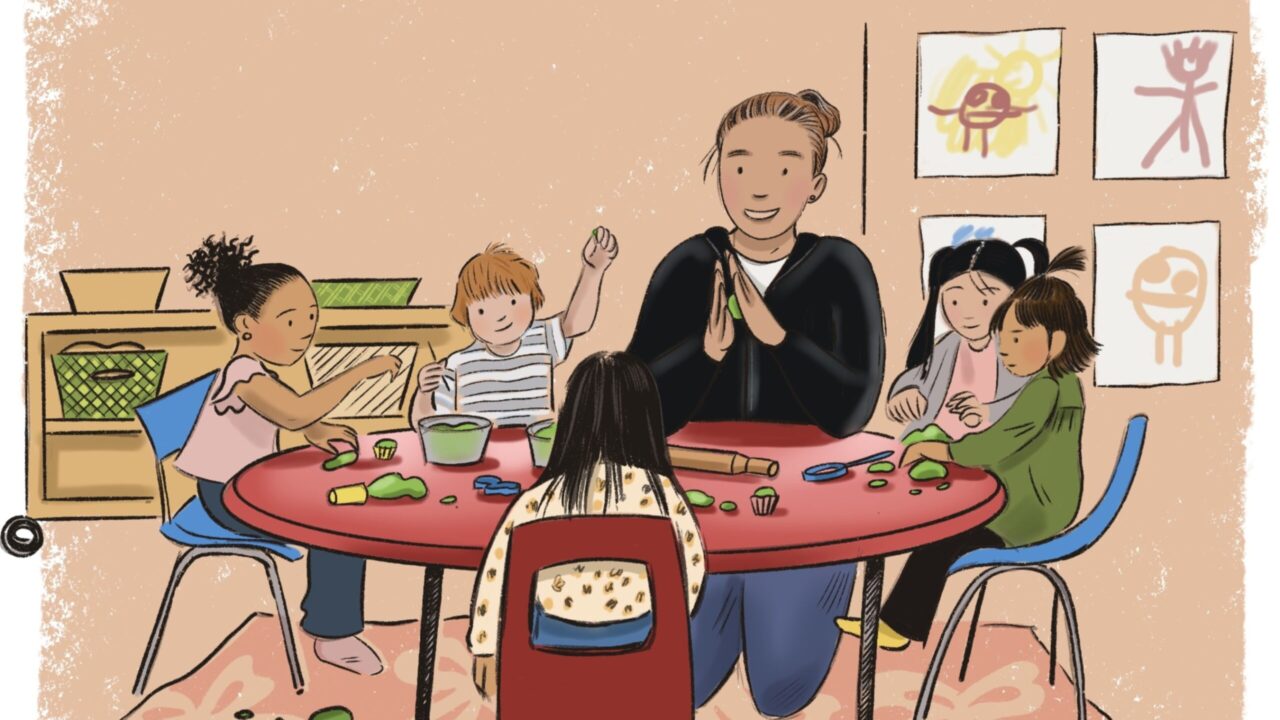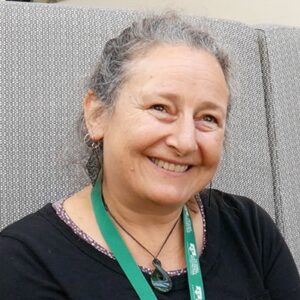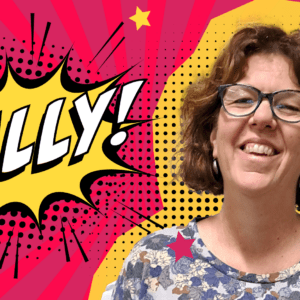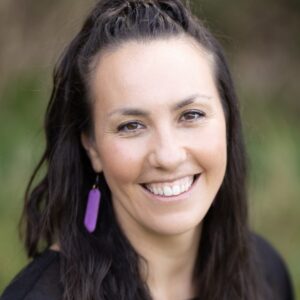“The kids are so lovely. They make my day. Really! It’s hard to put into words, but I feel that being alongside them, supporting them, puts meaning in my life.”
Bella Zhang is explaining the extraordinary arc of her life; how quite by chance the international student moved from pursuing a career in animation and design, to training as an early childhood teacher.
“I realised that as an unqualified teacher, there were limitations to my role. So, I decided to pursue the teaching qualification to gain deeper knowledge and more freedom in my position.”
Bella Zhang
Like many students, Bella had supported herself through university with a series of part time jobs, mostly waiting tables in restaurants or running a fast-food counter. It was quite unsatisfying work. So, when a friend suggested that she try picking up some hours as a day care reliever, Bella decided to give it a try. “I fell in love with the profession,” says Bella. “The children are a delight.”
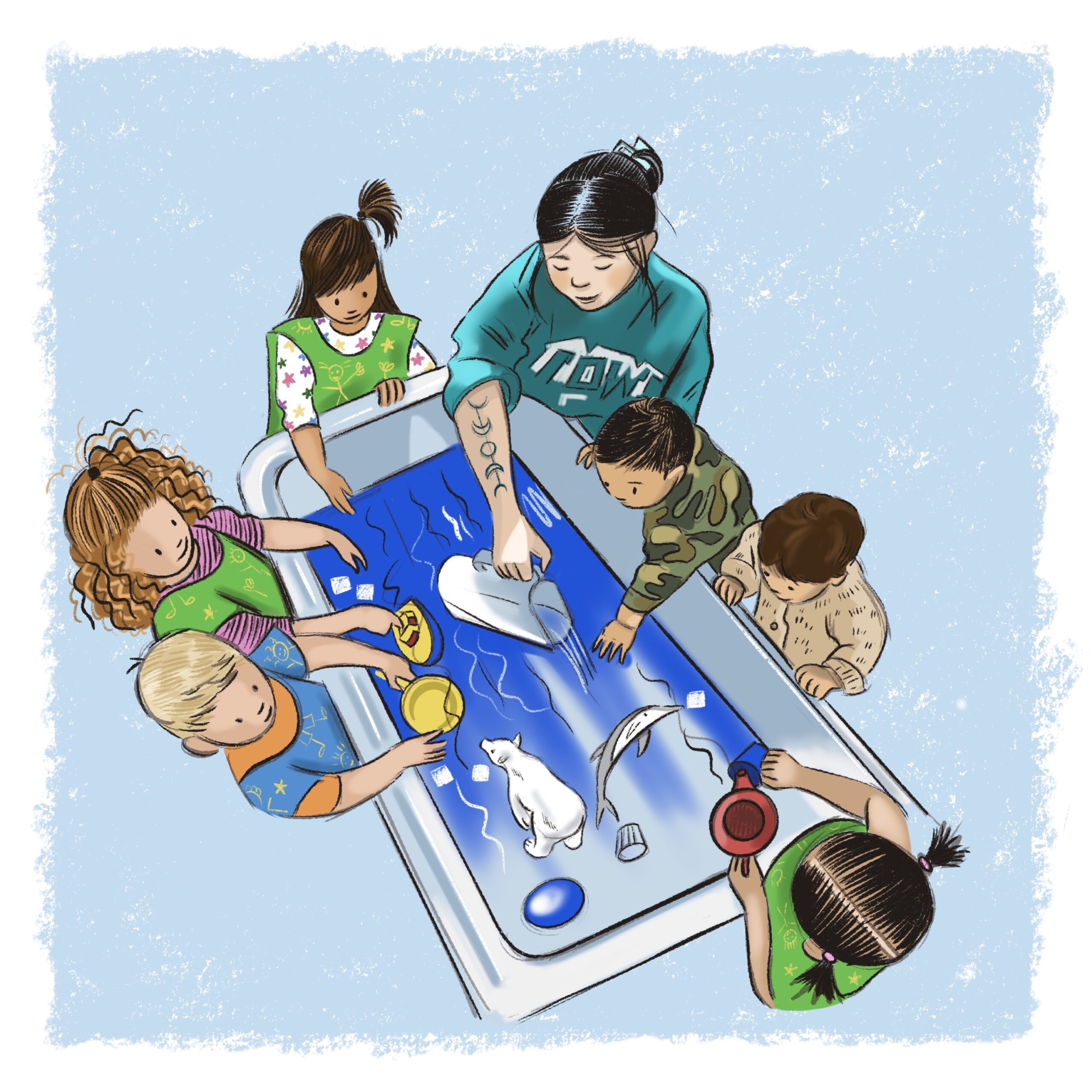
The experience was so powerful that when she graduated, Bella decided to continue working with tamariki and enrolled as a postgraduate student of early childhood education.
“I realised that as an unqualified teacher, there were limitations to my role. So, I decided to pursue the teaching qualification to gain deeper knowledge and more freedom in my position.”
Even though she has a few months before she becomes a qualified kaiako, Bella is already feeling the benefit of her newly acquired theoretical knowledge and supervised practicums.
“My understanding of tamariki and how they grow and learn has deepened significantly,” she says. “I’m better at identifying children’s needs and I’ve become more intentional in recognising and creating teaching moments.”
Bella is excited about becoming qualified and is keen to take up a career as a full-time kaiako next year. “It’s what I want to do,” she says.
***
Skye Barbour has long wanted to teach. Initially she had planned to train as a primary teacher but when there was no course available locally, she instead enrolled in a Bachelor of Education (ECE), planning to move into primary teaching later. Now, in her second year of study, her intentions have changed.
“Now that I’m working and studying in the sector, I really love it, and I think I’m going to stay with it.”
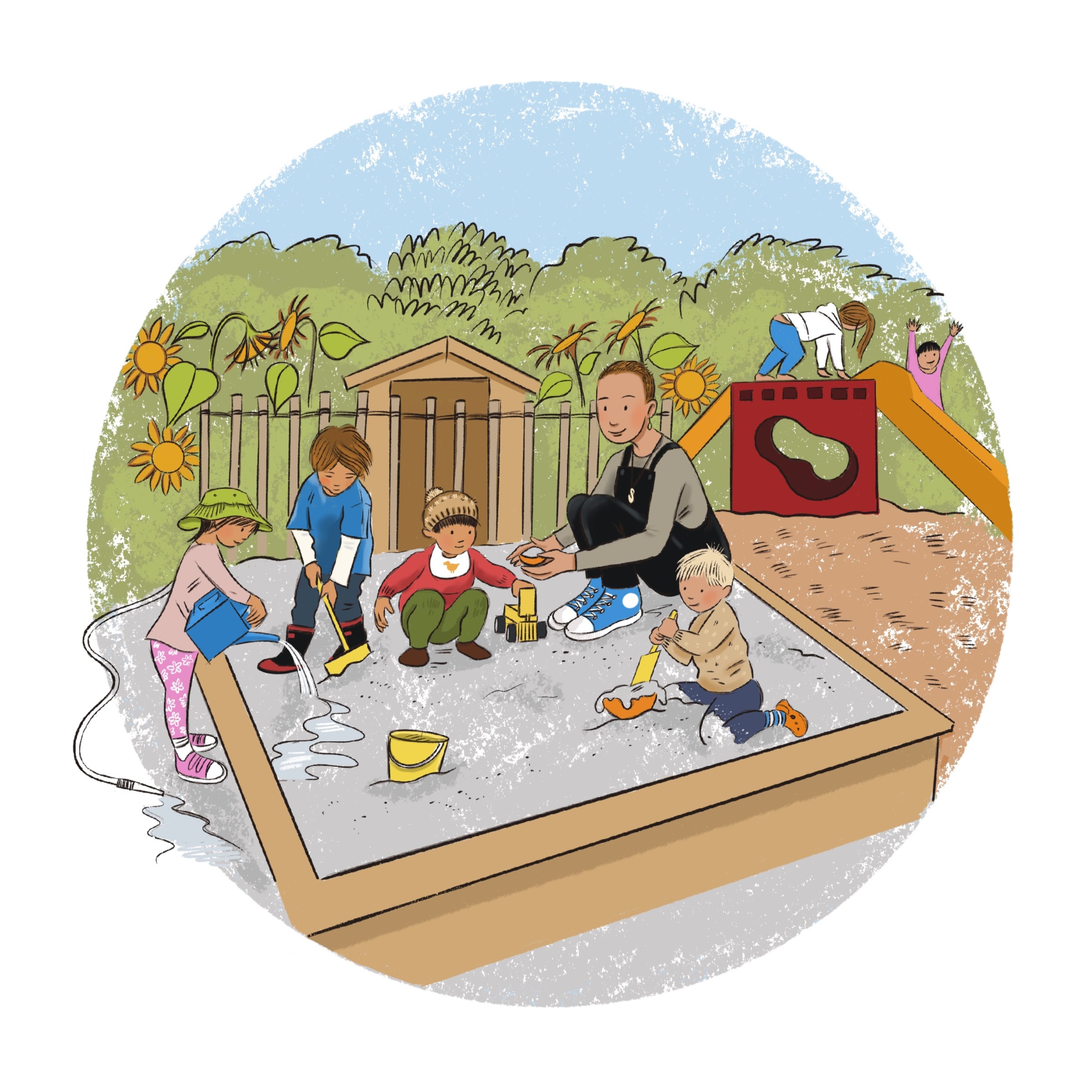
Skye has had placements working with infants and toddlers as well as older children and has been working part-time in a centre to support herself through university. She is pleased she has pursued a qualification.
“You can still be a good teacher without a qualification. Some people are very good with children naturally. But I think having a qualification ensures that you get a broad experience as well as knowledge about the best way to teach young children.”
***
No doubt Bella and Skye’s ambitions to work in ECE after they graduate will be fulfilled. Centres across the country are crying out for enthusiastic, qualified kaiako, while the numbers of those training to be teachers is falling. Both sector leaders and the Ministry of Education have continued to emphasise the importance of increasing the supply of qualified staff working with tamariki.
A 2024 briefing paper for the incoming Ministers acknowledged that “the beginning point of a world-class education is to have appropriately skilled and knowledgeable, qualified teachers. Research tells us that teachers are a key lever for raising children’s achievement in both school and early childhood education settings”.
“Teachers who are confident in their knowledge of child development, are seven times more likely to use best practice in working with tamariki.”
Let’s keep talking: Oral language development in the early years ERO report
So, it came as a surprise to many when the report of the Early Childhood sector regulatory review recommended that regulations be changed to allow “greater flexibility in workforce qualifications”. At the same time, the report advocated the removal of the link between the level of funding providers receive and the number of certificated teachers they employ.
The reaction across the sector was quick and mostly negative. The Teaching Council of Aotearoa, NZEI Te Riu Roa, groups of academics and teachers expressed deep concern that our once world-leading early childhood system might be about to take a massive backward step.
Professor Claire McLachlan, Pro Vice Chancellor Education at University of Waikato, is one of those familiar with the years of work it has taken to build our quality system.
“It’s sad to be having this conversation now,” she says. “I can recall in the mid-nineties when I was researching my PhD, there were stories about centres that were essentially baby farms. That was the worst of times. We’ve come a long way from that time, when almost anyone could open a centre.”
The findings of a 2012 New Zealand investigation into the impact of qualified teachers on children’s learning have been supported by several, recent overseas studies. The study found that trained teachers are more intentional in their interactions with tamariki. They are more likely to facilitate complex play and initiate conversations that help children form and develop concepts. Qualified staff were also found to provide more continuous care for infants.
“People who have had training see things that untrained people don’t see,” explains Professor McLachlan. “If you have training in maths or science or literacy, you see the opportunities for learning both in planned and spontaneous ways.”
A recent ERO report on oral language development supports this assertion, stating that “professional knowledge is the strongest driver of teachers using evidence-based good practices”. It found that teachers who are confident in their knowledge of child development, are seven times more likely to use best practice in working with tamariki.
While Professor McLachlan says she can relate to some recommendations in the regulatory review, she believes implementing the proposals around qualifications will have deleterious impacts on quality for tamariki, particularly for infants and toddlers who are already underserved.
“We should be putting our brightest and best teachers in with the babies to make sure that they have the rich ‘serve and return’ conversations that we know are going to lay the foundations for cognition, let alone language,” she says.
***
Like Claire McLachlan, Bridget Mickelson-Warmouth has had a lengthy and varied experience in early childhood education. She’s worked in not-for-profit, private, in-home services, with infants, with older children and is currently Head Teacher at Aro Valley Preschool. She’s also in no doubt that having qualified teachers is critical to running a successful centre.
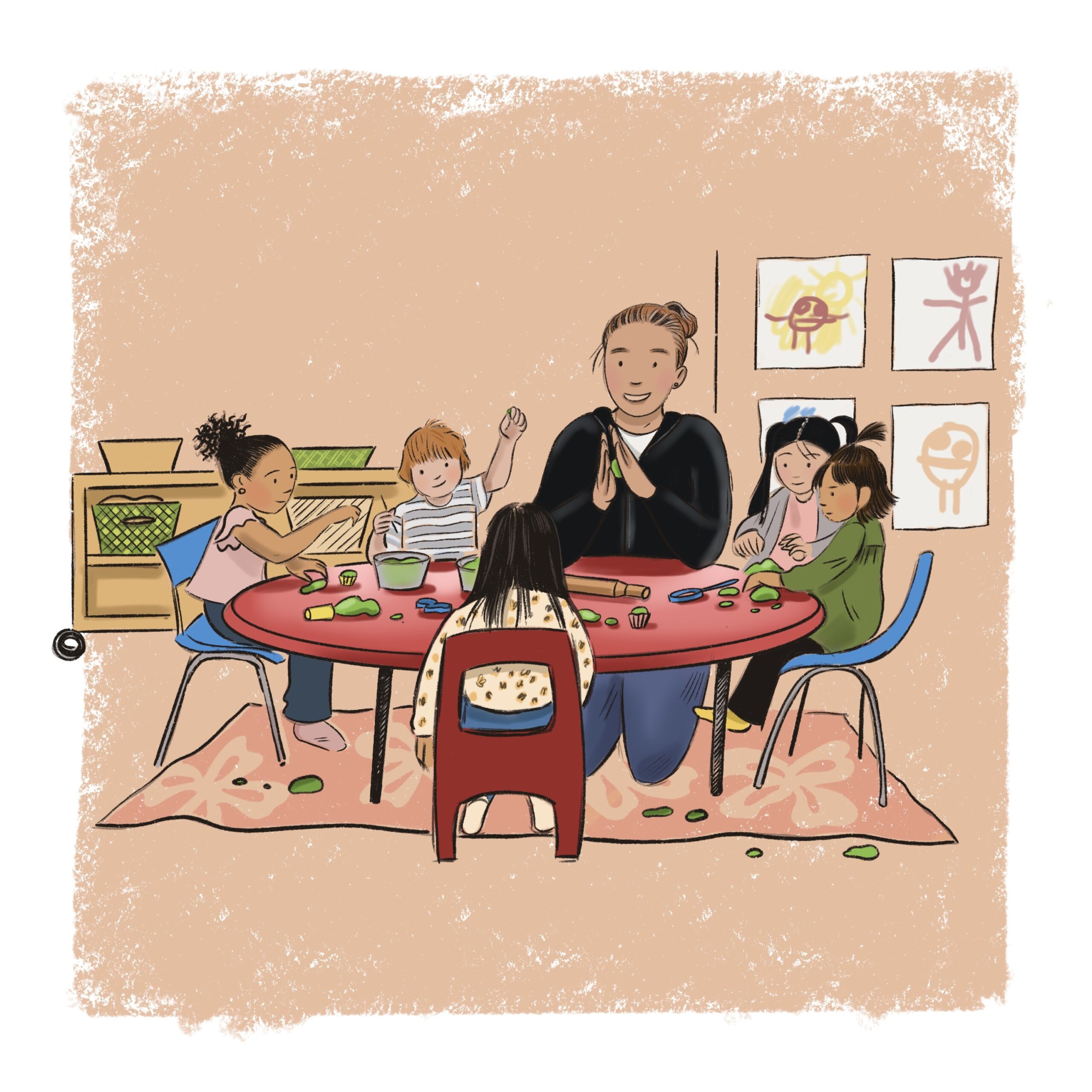
“For me it’s vital that I have teachers with qualifications and experience balancing out the team. Qualified teachers know the research and have a deeper understanding of child development and how children learn,” says Bridget.
She points out that as well as the academic study, a qualification is built on practical placements and mentoring from experienced and skilled teachers.
“When we have low ratios and high-quality teachers there will be better outcomes for everybody.”
Bridget Mickelson-Warmouth
Skilled teachers know how to read and respond to the cues of children. With infants who are non-verbal this is particularly important, not only for their care, but also to foster learning.
“Cues are different from one child to the next,” says Bridget. “Being able read those cues is the basis of really good relationships with tamariki, that are built from their first visit and transition into the centre.”
Good relationships come from trust and deep understanding of individual children, knowing their moods, their learning styles and interests. Skilled teachers will notice when individual children are stressed or unhappy.
“Getting into a child’s space and understanding what their need might be takes skill.”
Bridget worries about tamariki whose days are spent in centres where there is high staff turnover and low levels of qualified kaiako.
“In today’s world a lot of children don’t have someone at home that they can consistently rely on. Those children may be in a centre from 7:45am to 5:45pm and the relationships they form there are their key relationships. Those children need relationships that are stable, reliable and of the best quality.”
Qualified teachers are versed in the internationally renowned national curriculum Te Whāriki.
Te Whāriki shapes the way kaiako view children’s learning and development; socially, emotionally, physically and spiritually. It fosters a sense of belonging and embraces whānau. “It shapes how we work,” says Bridget. “After 30 years I still find things in the document that intrigue me.”
When asked about the proposed changes to qualification requirements, Bridget expresses concern that teachers and children are being devalued.
“I hadn’t realised how important our role as kaiako is and the impact we have on the lives of tamariki and society as a whole.”
Penina Ria
“Of course, that piece of paper saying you have a degree doesn’t give you everything you need to be sure a good teacher. In addition, you need to have the mentoring over time from people with experience and good quality teaching skills. You also need good ratios so you can have quality relationships with children. When we have low ratios and high-quality teachers there will be better outcomes for everybody.”
***
Napier-based Penina Ria (Ngāti Kahungunu, Ngāti Pārau) has been working in early childhood centres for nine years. Initially she was untrained and enjoyed contributing as a team member. She took her time to assess whether she wanted to commit to a long-term career in the sector, but after a couple of years, she took the plunge, enrolling to study through Te Rito Maioha.
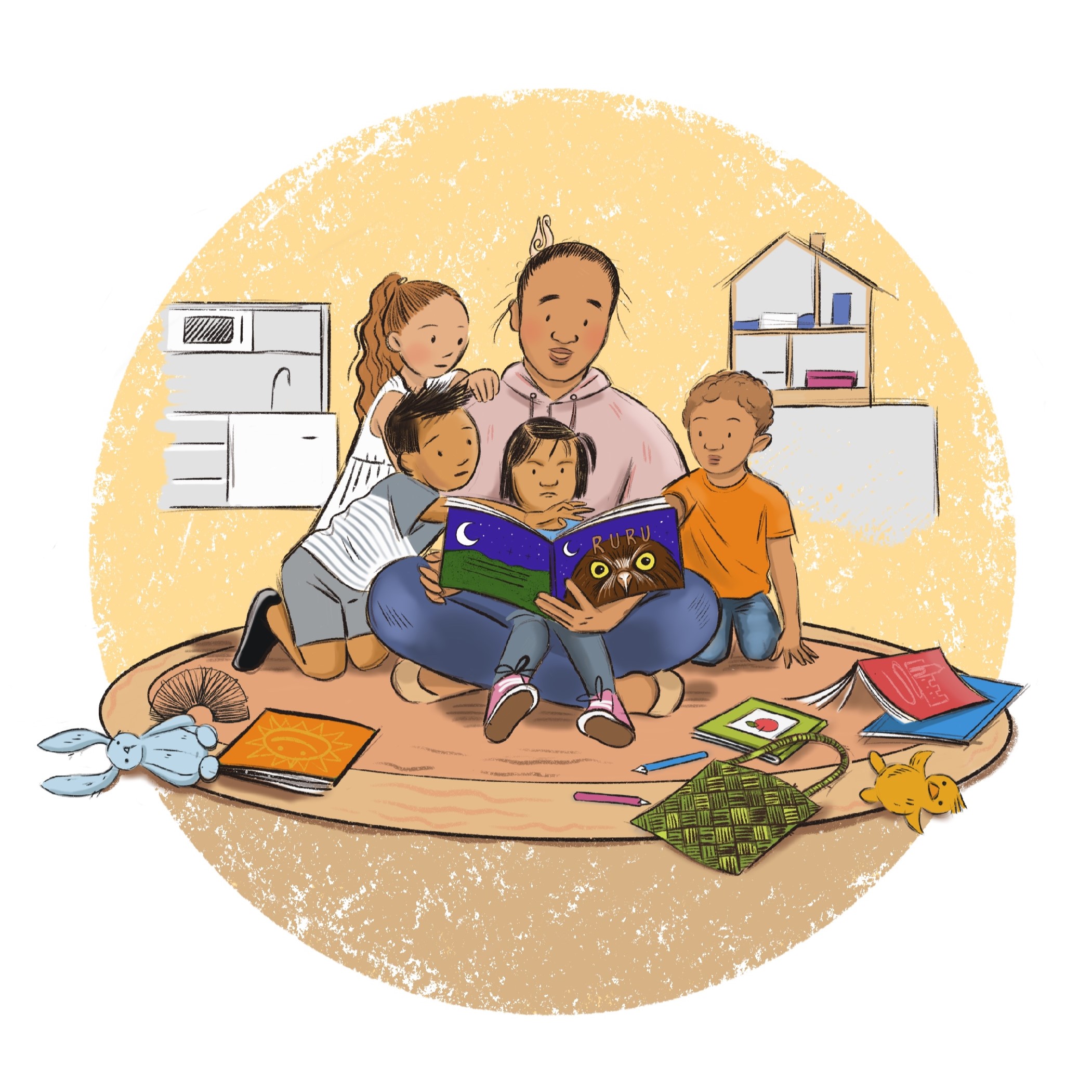
“Once I decided that a career in early childhood teaching was what I really wanted, I decided I needed to get a degree to be able to further myself,” says Penina. “I was seeing other colleagues moving up the ranks through study and I wanted to join them.”
Once she began her studies, Penina quickly began to understand her role and the tamariki she worked with quite differently.
“I hadn’t realised how important our role as kaiako is and the impact we have on the lives of tamariki and society as a whole. I also began to better understand the needs of tamariki. I developed more confidence to communicate and support them more fully.”
Penina began to recognise that all children are unique.
“They arrive at our centre with their own vital knowledge, understanding and ways of learning. It’s important that we kaiako respect those differences.”
Part of that is working with and supporting tamariki with additional needs and supporting whānau.
“Previously I didn’t have the confidence or knowledge to do that,” says Penina. “I left that to more qualified staff.”
Penina feels her experience as both an unqualified and qualified kaiako gives her insight into what is required for the operation of a quality centre. She believes reducing the number of qualified permanent staff is bad for everyone.
“My own experience is that it will put so much pressure on our qualified teachers, as well as on the unqualified members of the team, who feel vulnerable. That stress will be felt by tamariki as well.”
***
On 31 May 2025, Penina and her colleagues learned that the Government would further weaken qualification requirements. Associate Education Minister David Seymour announced that, in terms of pay, employers could disregard qualifications and experience when hiring new staff, effectively abandoning pay parity commitments. This follows a similar move last September affecting pay parity for qualified relief and fixed-term teachers. For those like Bella and Skye, who are about to enter the profession, the news was particularly distressing.
“It’s just been injustice after injustice. This latest [pay parity] announcement makes it clear that ECE is just not as valued as other teaching.”
Skye Barbour
“It was pretty upsetting,” says Skye. “But honestly, it wasn’t surprising, considering the number of things that have already been undermined in ECE. It’s just been injustice after injustice. This latest announcement makes it clear that ECE is just not as valued as other teaching. I know that primary and secondary are taking some hard blows too, but this really proves that ECE is just considered the lowest.”
For Skye personally, the loss of parity means that as a starting kaiako she could be earning $10,000 a year less in her first year and $20,000 less than a kindergarten teacher.
“It reinforces the feeling that teaching is not a very secure job,” says Skye. “That’s why a lot of students are leaving the sector for primary teaching or just leaving teaching altogether.”
This is especially disheartening, given the vital role early childhood teachers play in children’s development. As the 2024 Kōriporipo report notes, “every qualified and experienced kaiako on the floor makes a huge difference” to ākonga learning and wellbeing.
